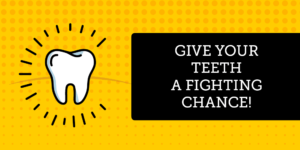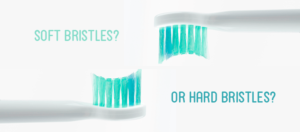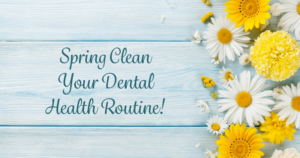ADA says it’s safe to return to the dentist.
I am often asked, “Is it safe to return to the dentist?” My answer is, “It depends on where you live and what your dentist is doing to protect you.” Knowing that we have met or exceeded all recommendations of the American Dental Association, I feel very confident treating healthy patients in my office.

In California, we were performing dentistry for several weeks in February & March while COVID-19 was silently spreading across the nation. With dentistry being considered a high-risk (health) profession, it is quite remarkable that to-date the CDC has not reported a single outbreak of COVID-19 originating from a dental office.
How is this possible? What it means is that the standard precautions used in dental offices has done a great job protecting patients and dental professionals.
Standard Precautions
Standard precautions in dentistry involves the practice of avoiding direct contact with patients’ bodily fluids by wearing personal protective equipment (PPE). Standard precautions includes: Hand hygiene, gloves, masks, eye protection, gowns or scrubs, strict protocols for protective barriers, high-level disinfecting rooms after every patient, and strict sterilization of all dental instruments before every use—we’ve been doing this for decades!
Since my office shut down on March 16, 2020, not a day has gone by that I haven’t read some form of conflicting information regarding COVID.
In August, the World Health Organizaion (WHO) made a blanket statement (without consideration of available technology or PPE’s) recommending all patients postpone dental visits. Two days later the American Dental Association (ADA) came out in strong disagreement, saying as long as proper precautions are taken and PPE’s are worn dentist have proven they are able to safely deliver dental services to their patients. The WHO has since modified their statement which now aligns with the ADA.
Better Safe Than Sorry
As a doctor, even I was confused, so I can understand why this has caused so much anxiety for the public. Because there were no clear answers I decided when we were closed down in March that my office would take extreme precautionary measures at every level to keep my patients and team members safe. Much like during the early AIDS epidemic, I decided it is better to be safe than sorry until we learn more about the ease of transmission of COVID-19 and/or have better treatments or a vaccine.
During the shut-down I was very transparent with my patients. We sent out emails and posted public health notices as well as every step we were taking to upgrade our office on our Facebook page.
I encourage all my patients to ask questions. I want everyone to feel safe when they are in my office. So far the majority of my patients have felt comfortable returning. I have other patients, who due to pre-existing conditions or family health concerns, have opted to postpone their visit. And that’s ok too.
If you’re thinking about going to the dentist but are unsure I recommend giving them a call and asking “what are you doing to protect your patients?”
In the mean time I wanted to share what I have done.

These are the steps we have taken to protect our patients and team members:
- Improved ventilation and airborne precautions. Airborne precautions are used in medicine when patients are suspected of having an infection that can be transmitted via airborne or droplet particles. In dentistry, we assume every patient has AIDS, hepatitis or tuberculosis and have always used airborne precautions. With COVID-19 now in the mix we have upgraded our air hygiene as follows:
-
- Added Medical-grade H13 filtration air purifiers to each of our treatment rooms, reception and waiting areas. We choose the “Medify MA-25” high-efficiency particulate air (HEPA) filters with 99.97% particle removal, down to .1 micron (higher rated than standard HEPA filters). I over sized the filters for the square footage such that they clean the air in each room every 9 minutes (or 7 times per hour).
- Added Hospital-grade air scrubbers, using ActivePure® Technology, to our central heating and air conditioning (HVAC). This system removes air pollution, bacteria, viruses, VOCs, surface contaminants, pet dander, odors and dust, resulting in a cleaner, and healthier air for all of us. The air scrubbers, which are installed directly to our HVAC system, uses certified space technology, created in cooperation with NASA, to protect the health of the astronauts on board the International Space Station.
- Employee screening: We screen all of our employees every morning and again after lunch. If someone is running a temperature over 100 or exhibiting any cold or flu-like symptoms they are sent home until they are symptom free. If an employee has been exposed to someone known to be positive for COVID-19 or they have ongoing symptoms they are to self-quarantine for 14 days and are not allowed to return to work without a doctors note or a negative COVID-19 test.
- Patient screening. We pre-screen all patients for symptoms, travel or exposure to COVID-19 prior to their appointment and take their temperature before they enter the building. Which means no patients with known recent (within 14 days) exposure to COVID-19 or any flu-like symptoms are allowed in our office. In addition, all patients are required use to wear a mask while they are in common areas of the building (eg. waiting room, front desk, hallway, bathroom).
- Standard precautions: We have continued to use standard precautions as discussed above to protect our team members. We have added N-95 masks (filter 95% of airborne particles) and face shields for all aerosol generating procedures. We also supply our team with clean scrubs every day which stay on the premises to be laundered every night, meaning employees are not allowed to leave the premises unless they are wearing clean clothes. In addition, team members wear a clean lab coat over their scrubs for added protection.
- Mouth rinse. We ask all patients to rinse with an antiseptic (kills bacteria/virus) mouth rinse prior to every examination, x-ray or procedure.
- Droplet precautions. In the waiting room we have rearranged and removed some furniture to allow for distancing and added plexiglass barriers to the reception areas. In the patient rooms we are continuing to use disposable barriers on all reusable equipment (like chairs, key boards, touch pads, air/water lines, etc) and follow standard procedures for disinfecting surfaces and sterilizing instruments after every patients.
- Contact precautions. We are currently keeping the front door locked with a sign that says “call us” when you get here. This allows us to open/close the door with clean hands and control the flow of patients. Patients are required to use Purell as they walk through the door. We have removed all magazines, brochures, toys, other touchable items (anything that can’t be wiped with a santiizer) from the waiting room.
While the extra precautions we have implemented are time consuming and expensive I feel confident we are protected. In fact, I feel safer in my office than I do at the hardware or grocery store where people are not pre-screened and masks are often not worn.
During these changing times, rest assured, your safety and that of our staff are always my top priorities. We will continue to follow Centers for Disease Control and Prevention (CDC,) American Dental Association (ADA,) California Dental Association (CDA,) California Department of Public Health (CDPH,) and OSHA guidelines to prevent the spread of all infectious diseases at all times.
My team and I will continue to monitor the COVID-19 situation as it evolves to ensure the highest level of safety during treatment.
References:
ADA ‘respectfully yet strongly disagrees’ with WHO guidance recommending delay of dental care.
CDPH | Guidance for Resuming Deferred and Preventive Dental Care


